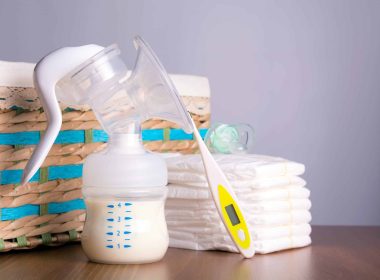Weaning Made Simple: A Guide for Parents by an Infant Feeding Specialist
As an infant feeding specialist, I often find parents overwhelmed by the prospect of introducing their babies to solid foods. Weaning doesn’t have to be as complicated as it seems; in fact, it’s much simpler than you might think. Let’s debunk the myths and get you started on this exciting journey.
When to Start: Signs of Readiness
The debate about when to introduce solid foods can be confusing. While most health organizations recommend starting around six months, it’s crucial to watch your baby, not just the clock. Look for these three signs of developmental readiness:
- Ability to Sit Upright: Your baby can sit with minimal assistance and hold their head up.
- Good Hand-Eye Coordination: They exhibit the coordination needed to handle food.
- Swallowing Skills: Your baby can swallow food, a crucial milestone for weaning.
The First Foods: Simple and Versatile
Choosing the initial foods can be a source of contention among parents, but the truth is there’s no absolute right or wrong way. Here are three options to consider:
- Ready ready brek Porridge: A smooth porridge-like consistency made with your baby’s usual milk or, if past six months, full-fat cow’s milk can be used in the diet.
- Vegetables: Either as a purée or in baby-led weaning style. Include them all, even the bitter green ones!
- Fruit and Vegetable Mix: Combine both as a purée or offer as finger foods.
Getting Started: Tips for Success
When beginning weaning, keep these tips in mind:
- Timing is Everything: Offer solid foods after your baby’s usual milk to avoid hunger distractions.
- Rested and Alert: Introduce solids when your baby is well-rested and alert to enhance the learning experience.
- Gradual Progression: Start with one meal a day and gradually increase to three meals by seven months.
Finding Balance Between Milk and Solids
One of the most common concerns parents have is how to balance milk feeds and solid foods. Here’s what you need to know:
- Milk is Vital: Milk remains crucial for your baby’s growth and development in the first year.
- “Food Before One is NOT Just for Fun”: As your baby starts on solids, focus on exposure and skill development.
- Breastfeeding Balance: Breastfed babies are adept at regulating their milk intake, so breastfeed on demand and offer solid meals on a schedule. When a baby is established on solids, some babies will drop a feed, some may have the same number of feeds in 24 hours but reduce the time on the breast, and others will feed as they always have. There is no right or wrong; just don’t expect them to drop a feed.
- Formula Feeding: Adjust formula feeds based on your baby’s preferences – some like fewer, larger bottles, while others prefer more frequent, smaller ones.
Conclusion
Weaning is a natural progression in your baby’s development, and it can be an enjoyable experience for both you and your little one. Keep it simple, pay attention to your baby’s cues, and most importantly, savour these precious moments of exploration and growth. Weaning is not a complex system; it’s a shared journey of discovery and nourishment for your baby and your family. Trust the process, embrace the simplicity, and relish in the joy of watching your baby embark on this exciting new chapter.
If you are looking for a Lactation Consultant within Kildare or Dublin, contact Katie Mugan for personalised advice on breastfeeding, weaning or any other lactation issue.
Seeking support from resources like Nursing Mama can provide valuable insights into breastfeeding support, knowledge, and expert advice.







